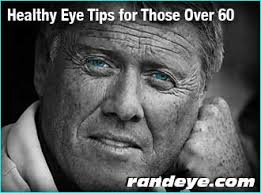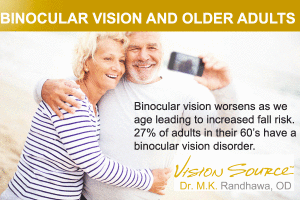Women-Higher Risk for Some Eye Diseases
Women are more likely than men to have glaucoma and women are also more likely to be visually impaired or blind due to glaucoma. Also, women are 24 percent less likely to be treated for glaucoma. Cataract is somewhat more common in women, as well. Women should be sure to follow the Academy’s screening guidelines and adhere to their Eye M.D.’s follow-up appointment recommendations and treatment plans.
Low Vision
The term low vision describes vision loss that makes daily tasks difficult. Normal aging of the eye does not lead to low vision; it is a result of eye diseases, injuries or both. Low vision symptoms nclude loss of central and/or peripheral (side) vision, blurred or hazy vision or night blindness. A person may have trouble recognizing faces, reading, driving and shopping. If you experience any of these problems, it is important to see your Eye M.D., who will check for and treat any underlying conditions and advise on low vision resources and low vision aids and devices to help with reading and other daily tasks. Most people with low vision need brighter lighting in their living areas.
Avoid Falls and Related Eye Injuries
About half of all eye injuries occur in or around the home, most often during improvement projects (44 percent). The good news is that nearly all eye injuries can be prevented by using protective eyewear, so every household needs to have at least one pair of certified safety glasses on hand.
It’s also important to reduce the risk of falls, which become more likely as we age, due to changes in vision and balance. Consider taking these safety steps around the home to diminish the risks of injuring your eyes:
- Make sure that rugs and shower/bath/tub mats are slip-proof.
- Secure railings so that they are not loose.
- Cushion sharp corners and edges of furnishings and home fixtures.
Systemic health problems to avoid
Systemic health problems like high blood pressure and diabetes that may be diagnosed or become more problematic in midlife can also affect eye health. One warning sign of both high blood pressure and diabetes is when the ability to see clearly changes frequently. Be sure to keep your Eye M.D. informed about your health conditions and use of medications and nutritional supplements, as well as your exercise, eating, sleeping and other lifestyle choices.
Exercise a great tip to help eyes
Our eyes need good blood circulation and oxygen intake, and both are stimulated by regular exercise. Regular exercise also helps keep our weight in the normal range, which reduces the risk of diabetes and of diabetic retinopathy. Gentler exercise, including walking, yoga, tai chi, or stretching and breathing, can also be effective ways to keep healthy. Remember to use sun safety and protective eyewear when enjoying sports and recreation.
Sleep are great also with exercise
As we sleep, our eyes enjoy continuous lubrication. Also during sleep the eyes clear out irritants such as dust, allergens, or smoke that may have accumulated during the day.
Some research suggests that light-sensitive cells in the eye are important to our ability to regulate our wake-sleep cycles. This becomes more crucial as we age, when more people have problems with insomnia. While it’s important that we protect our eyes from over-exposure to UV light, our eyes also need exposure to some natural light every day to help maintain normal sleep-wake cycles.

